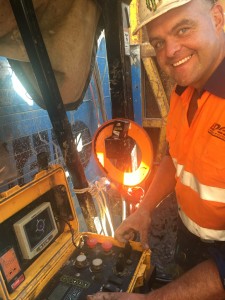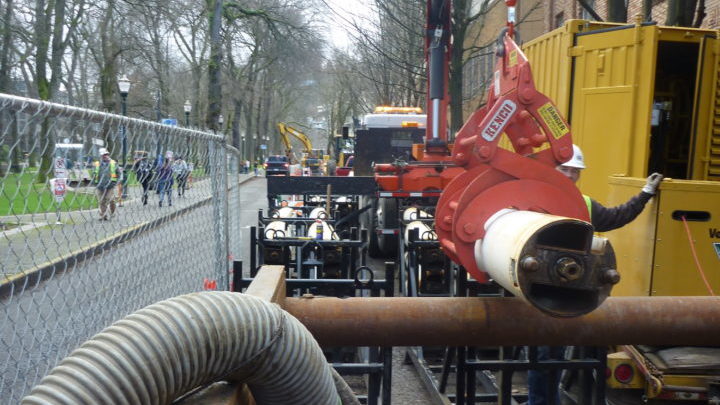Undertaking a microtunnelling installation within a tight timeframe can increase a project’s difficulty. However, certain measures can be taken to ensure that pipe installation is completed swiftly and efficiently with minimal hassle. We spoke to Stuart Harrison, Managing Director of Edge Underground to discuss pre-planning and microtunnelling best practices.
Organising personnel
Stuart Harrison, Managing Director at Edge Underground, has completed major microtunnelling works throughout Australia and abroad, with offices and personnel ready to work around the clock.
“Here at Edge Underground we have three separate microtunnelling crews operating all over Australia.
“Each crew is self-sufficient, mobile and has its own transportation. Because of this, crews can make their way to jobsites with minimal hassle, and this gives the contractor more options when scheduling works.
“It also means that Edge can work on multiple projects at once, as well as provide added assistance on-site if required,” says Mr Harrison.

Working within a tight timeframe requires a lot of pre-planning. Unexpected ground conditions, poor weather and mechanical failure all need to be accounted for, as there is always need for a ‘Plan B’ if something is to go wrong.
A recent project undertaken by Edge involved the construction of a gravity sewer beneath a train line. As the railway needed to be closed to complete the project, contingency plans were required for changing ground conditions, disposal of drilling mud, mechanical failure and supply of materials.
Steve Mitchell, Project Engineer at Edge Underground, said that the railway had to re-open after 48 hours “no ifs, no buts”. Because of this, planning and organisation of the construction had to be highly effective and closely monitored.
“Organising appropriate crews for the job was a top priority, as well as selecting the most appropriate tools, materials and drilling equipment,” said Mr Harrison.
Pre-planning for specific conditions
Changing ground conditions
For this particular project, test pits at each end of the bore were constructed prior to establishment. Rock, clay and mixed heads were also prepared before the shutdown commenced in case of changing ground conditions.
Disposal of drilling mud
For the disposal of drilling mud, 24-hour access to a local, licensed tipping facility with adequate capacity was arranged prior to shutdown. All weather access had to also be established before the project began.
Mechanical failure
To reduce the risk of mechanical failure during the project, all equipment was serviced, tested and made ready for operation.
“We ensured that we had adequate spare parts available, as well as mechanical and hydraulic fitters on standby throughout the project’s operating window.
“We also had a second microtunnelling machine available in case of breakdown,” said Mr Harrison.
Poor weather
Earthmoving equipment and quarry materials were also brought on-site in case any modification or maintenance of access roads was required during shutdown.
“During the railbore project, wet weather did result in the access roads needing to be re-made. Having equipment and quarry materials on site meant that we could resume project works by mid-morning, with final works completed within the project’s deadline.”
Supply of materials
As there would be no time for modifications of any materials on-site, steel jacking bands, concrete jacking pipe, joint packers, centralising brackets and PE carrier pipework all had to be measured and trialled before the project began.
“As the project was carried out over a weekend, we also had to pre-book the concrete batching plant for the supply of grout during the project,” said Mr Harrison.
Once the initial bore was completed, a 144m x DN400 (OD 550mm) polycrete pipe was installed on line and grade to complete the sewer line.
The extra mile
It is this sort of forward-thinking that makes Edge Underground stand out from the crowd as a reliable and self-sufficient microtunnelling team.
“Our high degree of organisation, mixed with our level of flexibility, allows us to tackle even the most demanding and/or time-sensitive installations.
“We are used to going the extra mile for our clients, to consistently complete the job to a high standard – it’s our prerogative and something that we pride ourselves on,” says Mr Harrison.
Looking for an experienced microtunneller? Contact Stuart at Edge Underground on
1300 JACKED or email stuart@www.edgeunderground.co

